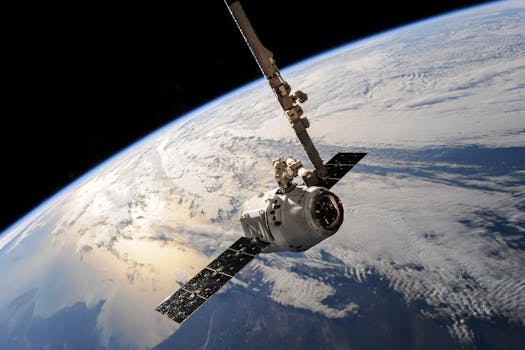MEO Satellites: Revolutionizing Global Communication with Medium Earth Orbit Technology – MEO satellites

MEO Satellites: Revolutionizing Global Communication with Medium Earth Orbit Technology – MEO satellites
MEO satellites are revolutionizing the way we communicate globally, offering faster and more reliable connections. Medium Earth Orbit (MEO) technology has become a crucial part of modern satellite communication, providing a range of benefits over traditional Geostationary Orbit (GEO) and Low Earth Orbit (LEO) systems. In this article, we will delve into the world of MEO satellites, exploring their history, advantages, and applications, as well as the current state of the industry and future developments.
The concept of MEO satellites dates back to the 1990s, when the International Telecommunication Union (ITU) began allocating frequency bands for use in MEO systems. However, it wasn’t until the early 2000s that the first commercial MEO satellite constellations were launched. One of the pioneers in this field was the O3b Networks, which launched its first batch of MEO satellites in 2013. Since then, several other companies have followed suit, including SES, Intelsat, and OneWeb.
So, what makes MEO satellites so special? The answer lies in their unique orbital characteristics. MEO satellites operate at an altitude of around 8,000 to 20,000 kilometers, which is higher than LEO satellites but lower than GEO satellites. This intermediate altitude provides several advantages, including lower latency, higher signal strength, and improved coverage. MEO satellites can offer latency as low as 20-30 milliseconds, which is significantly lower than the 200-300 milliseconds experienced with GEO satellites. This makes MEO satellites ideal for real-time applications such as video conferencing, online gaming, and remote healthcare.
Advantages of MEO Satellites
MEO satellites offer a range of benefits over traditional satellite systems. One of the main advantages is their ability to provide global coverage with a relatively small number of satellites. While GEO satellites require a large number of satellites to provide global coverage, MEO satellites can achieve the same with fewer satellites. This reduces the cost and complexity of the system, making it more attractive to satellite operators and consumers alike.
Another significant advantage of MEO satellites is their resistance to interference. Because MEO satellites operate at a higher altitude than LEO satellites, they are less susceptible to interference from other satellites and terrestrial systems. This makes them ideal for applications where signal integrity is critical, such as in the financial sector or for government communications.
Applications of MEO Satellites
MEO satellites have a wide range of applications, from broadband internet access to mobile connectivity and IoT (Internet of Things) services. One of the most significant applications is in the provision of broadband internet access to remote and underserved communities. MEO satellites can offer high-speed internet access to areas where traditional fiber-optic or wireless networks are not available, helping to bridge the digital divide and promote economic development.
MEO satellites are also being used to provide mobile connectivity to areas with limited or no cellular coverage. This is particularly important for emergency responders, who need reliable communication services to respond to natural disasters and other emergencies. Additionally, MEO satellites can provide connectivity to IoT devices, enabling applications such as smart cities, industrial automation, and precision agriculture.
Current State and Future Developments
The MEO satellite industry is rapidly evolving, with new technologies and applications emerging all the time. One of the most significant developments is the advent of next-generation MEO satellites, which offer even higher speeds and lower latency than their predecessors. These satellites are being designed to support a range of new applications, from 5G networks to extended reality (XR) services.
Another significant trend is the growth of constellations, where multiple MEO satellites are launched together to provide global coverage. This approach allows satellite operators to offer more comprehensive and reliable services, while also reducing the cost per satellite. As the demand for satellite-based services continues to grow, we can expect to see even more MEO satellite constellations launched in the coming years.
In conclusion, MEO satellites are revolutionizing the way we communicate globally, offering faster and more reliable connections. With their unique orbital characteristics and range of benefits, MEO satellites are ideal for applications such as broadband internet access, mobile connectivity, and IoT services. As the industry continues to evolve, we can expect to see even more innovative applications and technologies emerge, further transforming the world of satellite communication.

